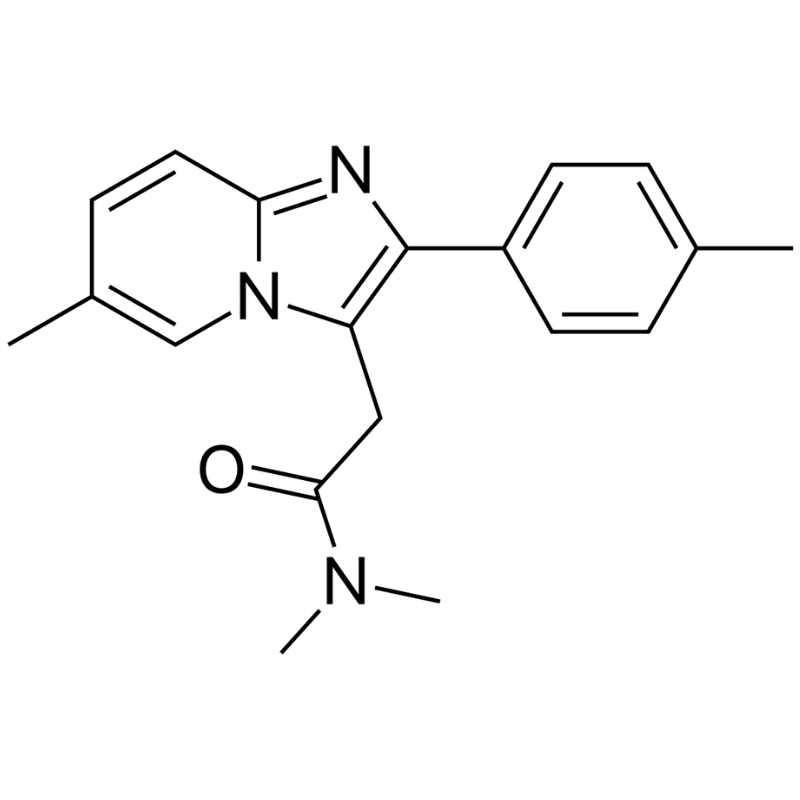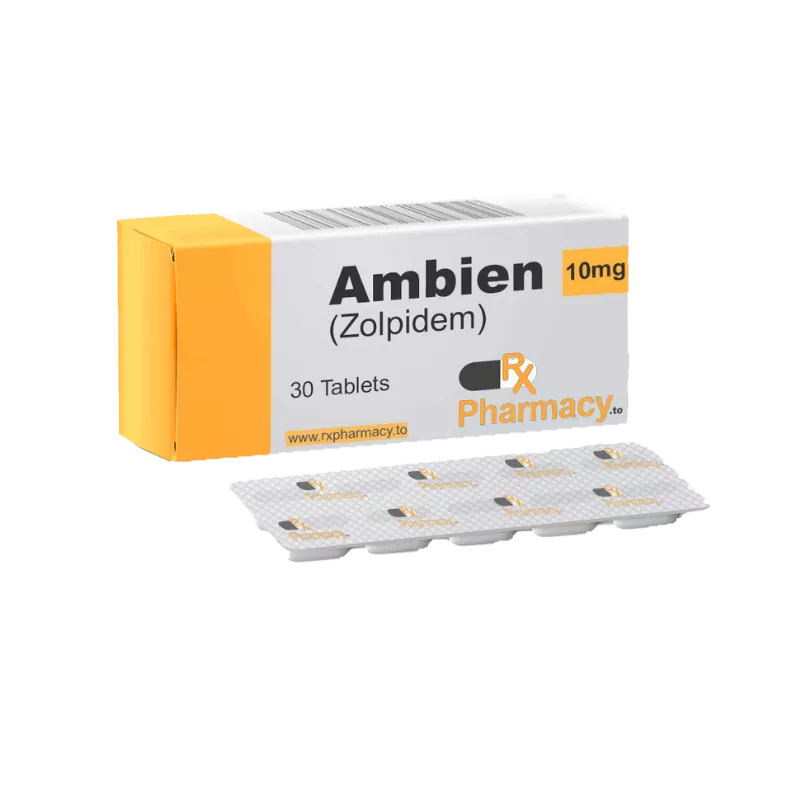Does Kratom Interact With Zolpidem (Ambien)?
Yes. Taking kratom with zolpidem could cause negative interactions between the drugs. Also, because of the severity of zolpidem’s side effects and the lack of safety information, it’s wise to avoid using kratom in combination with all Z-drugs (including Zolpidem).
Firstly, kratom and zolpidem might interact at a metabolic level. For some context, most of the drugs and supplements we take are metabolized in the liver by a group of enzymes known as the CYP450 (cytochrome P450).
The enzymes responsible for breaking down kratom include CYP2D6, CYP2C19, and CYP3A4 [1].
Zolpidem is mainly metabolized by the CYP1A2, CYP2C9, CYP2D6, and CYP3A4 [2]. Therefore, there’s a possibility kratom could compete with zolpidem to bind to such CYP enzymes. This type of pharmacological interaction is known as metabolic inhibition, and can cause drug buildups and toxicity.
Moreover, zolpidem is a powerful sedative. If combined with other sedatives — such as high-dose kratom — zolpidem could cause extreme sedation and other serious side effects like fainting and respiratory depression.
When two drugs are taken together and they potentiate each other’s effects, we call this an agonistic interaction.
Lastly, as taking kratom in low doses provides stimulant, energetic effects, combining it with zolpidem could counteract the drug’s sedative effects. This is known as an antagonistic interaction.
Because of these interactions between the drugs, its best to avoid this combination and consult your doctor to find the best treatment regime for you.
Zolpidem (Ambien) Specs:

| Drug Name | Zolpidem |
| Trade Name | Ambien |
| Other Names (other generics) | Edluar, Intermezzo, Zolpimist |
| Classification | Non-benzodiazepine Z drug |
| CYP Metabolism | CYP3A4, CYP2D6, CYP1A2 & CYP2C9 |
| Interaction With Kratom | Antagonistic, Agonistic & Metabolic Inhibition |
| Risk of Interaction | Moderate |
Is It Safe to Take Kratom With Zolpidem (Ambien)?
Experts don’t consider zolpidem and kratom a safe combination. The chances of side effects increase when mixing these substances. Because of the severity of the potential side effects, it’s wise to give this combo a pass unless you speak with your doctor first.
The only scenario where combining these drugs could make plausible sense is if a stimulant dose of kratom is preventing you from going to sleep. However, as we have seen, there is an inherent risk of causing a metabolic interaction and experiencing other side effects.
In general, you should try to avoid this combination. At the very least, consult your doctor before attempting it.
What Is Zolpidem (Ambien)?
Zolpidem — sold under the brand name Ambien — is classified as a non-benzodiazepine Z drug. More generally, it falls under the umbrella of sedative-hypnotic medications [3].
“Z drugs” like zolpidem are very similar to benzodiazepines in structure and function and are used to promote sleep. They increase the effects of GABA neurotransmitters, which help inhibit neuron activity.
Essentially, zolpidem works by slowing down activity in the brain.
Due to its potential for misuse and physical and psychological dependence, zolpidem is a Schedule IV controlled substance. Nevertheless, it is still one of the most prescribed medications for sleep-related problems in the United States.

What Is Zolpidem (Ambien) Used For?
Zolpidem (Ambien) is prescribed to treat many sleep-related issues. Although it can improve the latency and duration of sleep, it’s most effective at fixing difficulties related to sleep initiation [3].
Several official institutions, such as the European Sleep Research Society and the American College of Physicians, recommend that zolpidem and similar medications only be an option after exhausting non-pharmacological treatments [4].
Zolpidem is only a short-term treatment strategy. It’s generally not prescribed for more than a period of six weeks. Only ingest zolpidem as instructed by your physician.
What’s the Dose of Zolpidem (Ambien)?
Zolpidem (Ambien) should only be taken as a prescription medication after consultation with a doctor. Always take zolpidem according to your prescription.
As with other medications, some factors must be considered to provide dosage recommendations for zolpidem including, age, whether the user is hepatically impaired, or using other prescription medications like antidepressants.
Zolpidem is fast-acting — the effects usually take about 30 minutes. It can be taken in various forms, such as tablets, extended-release tablets, oral spray, and sublingual tablets. The dosage of zolpidem usually ranges between 5 mg or 10 mg, depending on the patient’s sleep quality [3].
The proper time to take zolpidem is always just before going to bed.
Generic & Brand Name Versions
Zolpidem is sold under the following brand names:
- Ambien
- Ambien CR
- Edluar
- Intermezzo
- Zolpimist

What Are the Side Effects of Zolpidem (Ambien)?
Some of the side effects of zolpidem (Ambien) include [3]:
- Abdominal pain
- Allergy
- Back pain
- Constipation
- Diarrhea
- Drowsiness
- Dry mouth
- Heart palpitations
- Lethargy
- Sinusitis
- Sore throat
Zolpidem can also increase the risk of more serious adverse effects like depression, suppressed respiration, respiratory infections, and memory loss [5].
Moreover, zolpidem users have been reported to sleepwalk and engage in other activities like driving, cooking, and eating while sleeping. This behavior carries an inherent risk of accidents that can become fatal.
Zolpidem impairs cognitive function. If users took zolpidem the night before, they should not engage in activities that require complete focus, like driving or operating heavy machinery.
Additionally, there have been reports of zolpidem triggering withdrawal symptoms when stopped abruptly.
What Is Kratom?
Fast becoming popular due to its wide range of medicinal properties, kratom (Mitragyna speciosa) is a member of the coffee family (Rubiaceae) and a native species from Southeast Asia.
Thriving in countries like Vietnam, Thailand, Indonesia, and Malaysia, kratom has been used for centuries as traditional medicine by the native peoples to combat fatigue and pain.
Kratom works by binding to opiate receptors in the central nervous system, however, kratom is not considered an opiate. This mechanism has led to several comparisons between opiates and kratom, although kratom is the safer alternative.
The effects of kratom derive from the many plant-based alkaloids contained within it. The two main alkaloids are mitragynine and 7-hydroxymitragynine.
What Is Kratom Used for?
Kratom is a remarkable herb because it can produce a spectrum of effects — ranging from stimulant to sedative — depending on the dose you take.
When taken at low doses, kratom provides energetic and nootropic properties. At higher doses, it can promote analgesic, sedative, and even anxiolytic benefits.
Many people take it in the mornings to feel a burst of energy and focus — it’s an excellent replacement for coffee. Those with chronic pain have also turned to kratom as an alternative to unsafe long-term treatments like opiates.
Also, kratom is effective at helping users deal with opiate, benzo, and alcohol withdrawal symptoms [6].
Other modern uses of kratom include the following:
- ADHD (Attention Deficit & Hyperactivity Disorder)
- Anxiety
- Arthritis pain
- Chemotherapy-related pain
- Depression
- Fibromyalgia
- Insomnia
- Migraines
- Mood
- Nerve pain
- Pain
- Psoriatic arthritis
- Weight loss

What’s the Dose of Kratom?
As with any other medication or supplement, you’ll need a bit of trial and error to find the best kratom dose tailored for your needs.
The generally recommended kratom dosages are the following:
- Low dose (1-4g) — this kratom dosage is optimal for stimulating nootropic benefits and focus.
- Medium dose (4-8g) — this amount of kratom is best for anxiolytic properties and pain relief.
- High dose: (8-12g) — This can cause strong sedative effects and helps treat severe pain and anxiety. However, this dose is not for beginners. You should never mix kratom with another substance at these dosage levels.
Just keep in mind that everybody’s body is different; start with the lowest dose and go slow.
Related: Can You Overdose on Kratom?
What Are the Side Effects of Kratom?
Kratom is an unregulated substance. This means that the FDA has largely blocked wide-scale controlled studies of it, so there is much more to learn. Like with any other substance, there are side effects to be aware of.
The most common side effects of kratom include the following:
- Anxiety or restlessness
- Constipation
- Diarrhea
- Dizziness
- Depression
- Frequent urination
- Headaches
- Heart palpitations
- High blood pressure
- Liver damage (with long-term use)
- Low libido
- Nausea and vomiting
- Numbness
- Sedation and prolonged sleepiness
- Withdrawal symptoms
- The Wobbles
Also, kratom can cause physical dependence when taken in large doses for an extended period.
Lastly, you should always buy your kratom from a trusted source to remove the risk of contaminants.
What Are the Different Types of Kratom?
Kratom comes in a variety of strains. Although these strains all have roughly the same effects, they concentrate more heavily on different aspects of the kratom plant.
This allows kratom users to choose a more targeted kratom experience.
Strains mainly vary according to their “type” (white, red, green, or yellow). They also grow in different areas of Southeast Asia, allowing for a wide selection of varying kratom profiles.
There are many strains to choose from, so do your research.

White Vein Kratom
White vein kratom strains are known to promote the nootropic and stimulant aspects of kratom more vigorously. If you’re looking for a boost, white-veined strains are your best choice.
White vein users report a burst of creativity and mental clarity.

Red Vein Kratom
The red-veined kratom strains are more on the analgesic, sedative side. They also have anxiolytic benefits.
Those dealing with chronic pain or taking kratom for anxiety relief usually gravitate to the red-veined strains. Many users also take them as sleep support.

Green Vein Kratom
Green vein kratom is best if you happen to be looking for a more general kratom experience. Green-veined strains have a healthy balance of the properties found in white and red kratom.
If you’re starting with kratom, this strain is probably best for you.
However, if you want to take kratom to deal with a specific ailment or to promote a certain kind of benefit, you’re probably better off going with the targeted experience of a white or red vein.

Yellow Vein Kratom
Yellow vein kratom is considered the odd one out in the kratom family. This is because it is a subcategory arising from the mixture of red and white kratom strains.
The general agreement in the kratom community is that yellow vein kratom is closest to the green-veined strains.
Yellow vein strains are milder than the average green-vein kratom strain, making them an excellent choice for first-time users.

Key Takeaways: Is It Safe to Mix Kratom & Zolpidem (Ambien)?
Kratom and zolpidem (Ambien) are metabolic competitors, and mixing them can lead to an increased rate of adverse side effects.
However, when done rarely and in low doses, mixing kratom and zolpidem will likely not trigger any adverse effects.
If you believe you need to use this combination for medical reasons, consult your physician beforehand.
- Kamble, S. H., Sharma, A., King, T. I., León, F., McCurdy, C. R., & Avery, B. A. (2019). Metabolite profiling and identification of enzymes responsible for the metabolism of mitragynine, the major alkaloid of Mitragyna speciosa (kratom). Xenobiotica, 49(11), 1279-1288.
- von Moltke, L. L., Weemhoff, J. L., Perloff, M. D., Hesse, L. M., Harmatz, J. S., Roth-Schechter, B. F., & Greenblatt, D. J. (2002). Effect of zolpidem on human Cytochrome P450 activity, and on transport mediated by P‐glycoprotein. Biopharmaceutics & drug disposition, 23(9), 361-367.
- Bouchette, D., Akhondi, H., & Quick, J. (2021). Zolpidem. In StatPearls [Internet]. StatPearls Publishing.
- National Institute for Clinical Excellence. Guidance on the use of zaleplon, zolpidem, and zopiclone for the short-term management of insomnia. 2004. Technology Appraisal Guidance, 77.
- Kripke, D. F. (2016). Mortality risk of hypnotics: strengths and limits of evidence. Drug safety, 39(2), 93-107.
- Boyer, E. W., Babu, K. M., Adkins, J. E., McCurdy, C. R., & Halpern, J. H. (2008). Self-treatment of opioid withdrawal using kratom (Mitragynia speciosa korth). Addiction, 103(6), 1048-1050.










